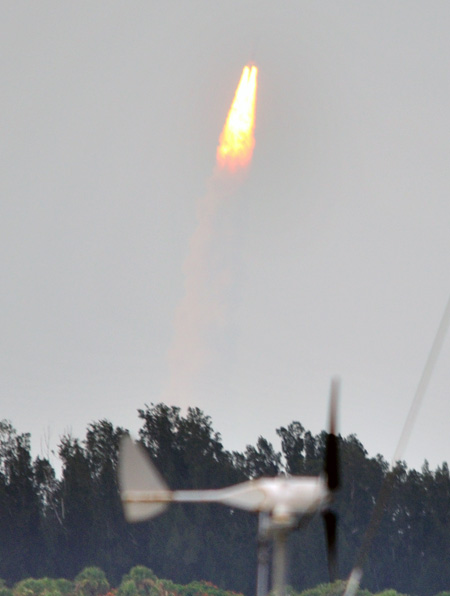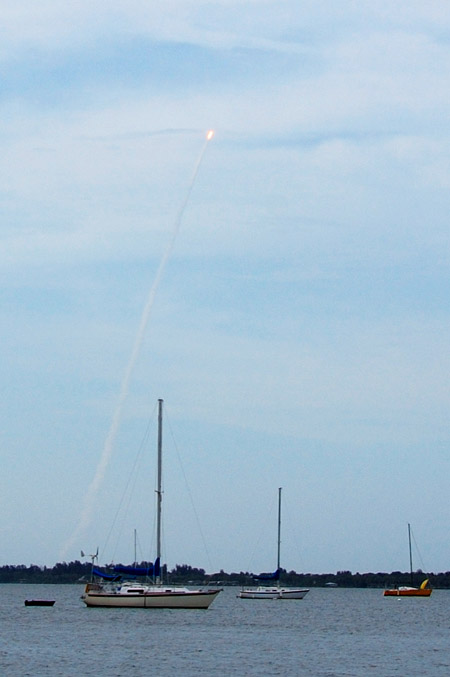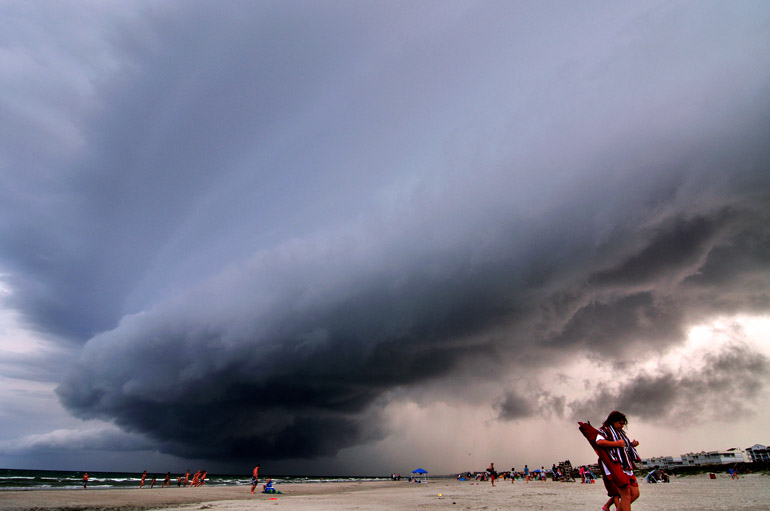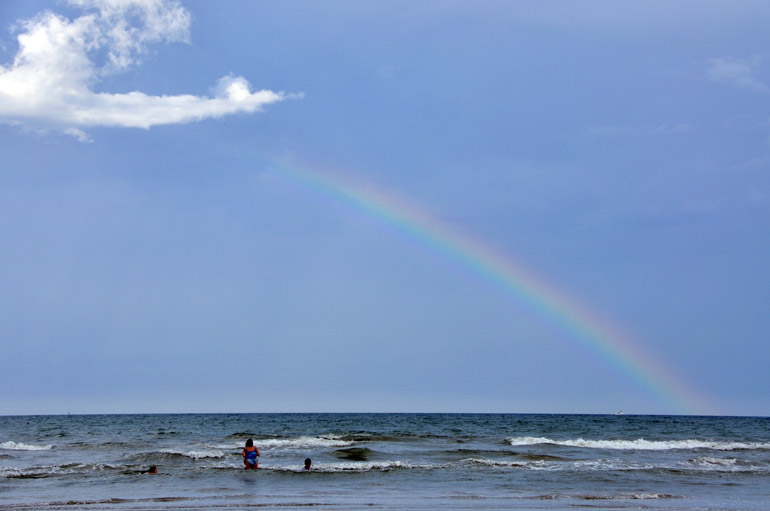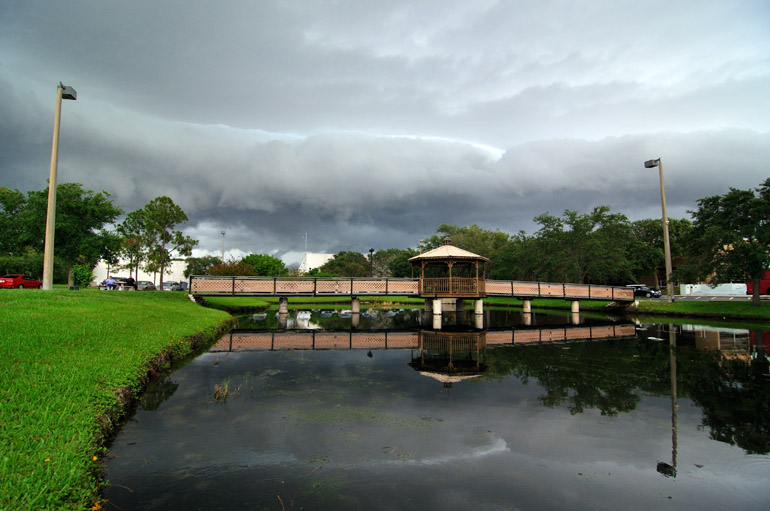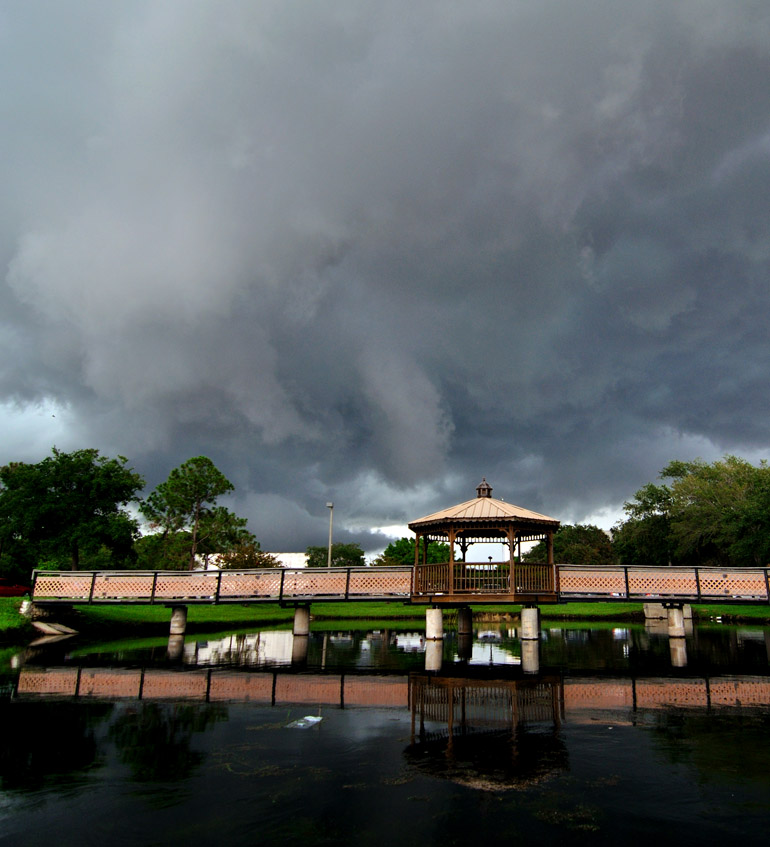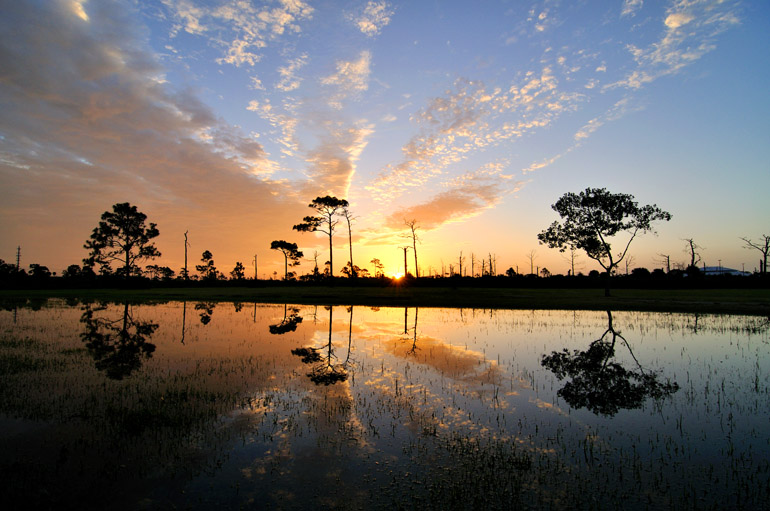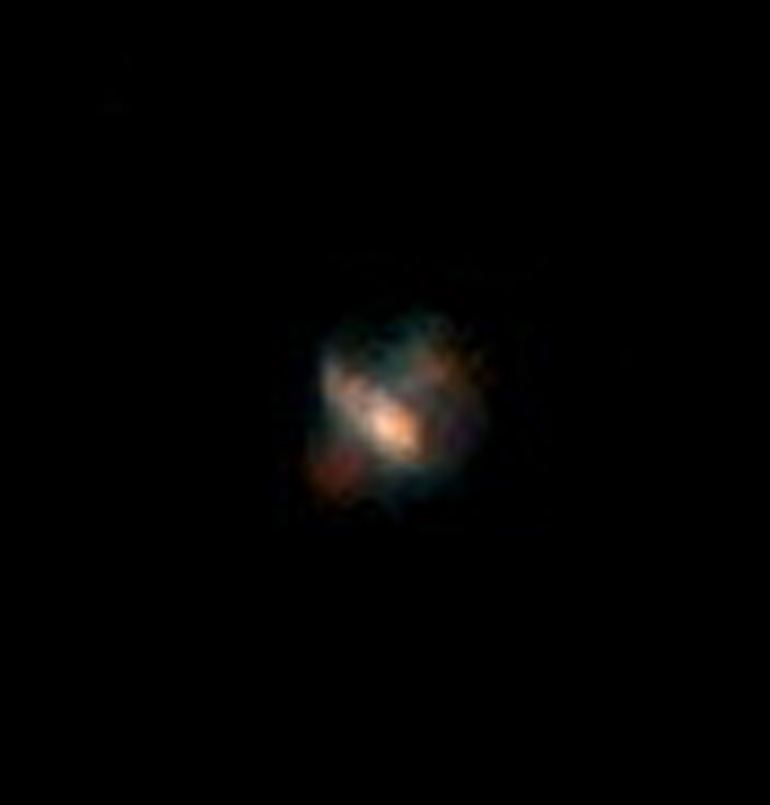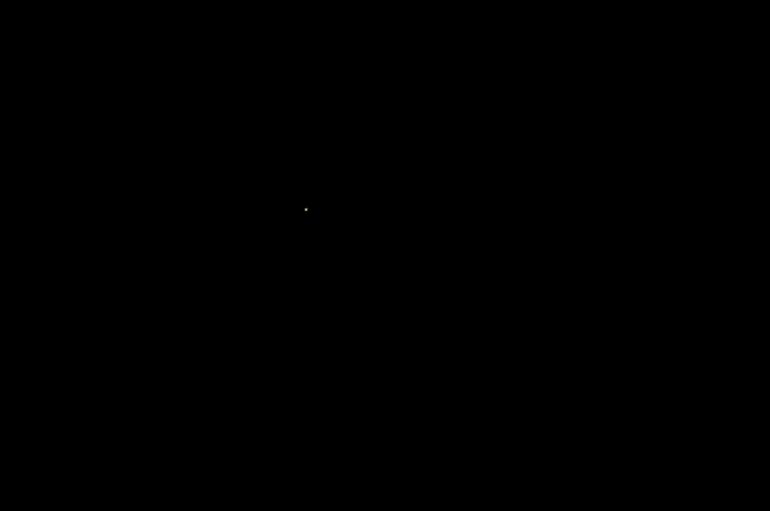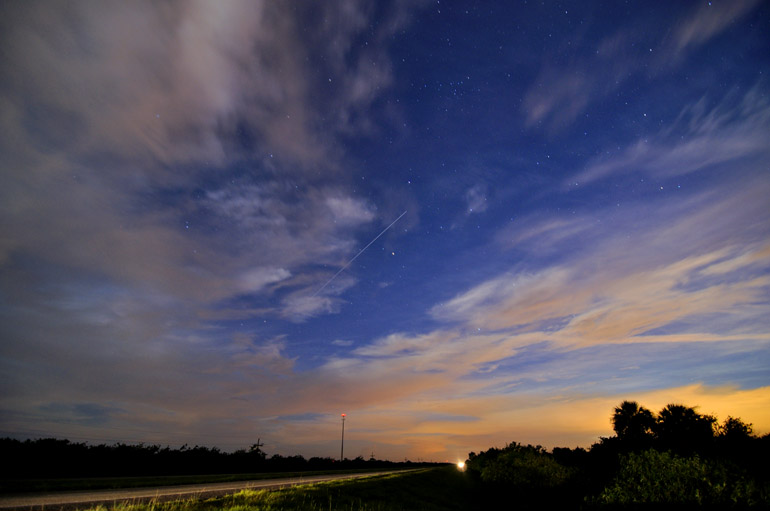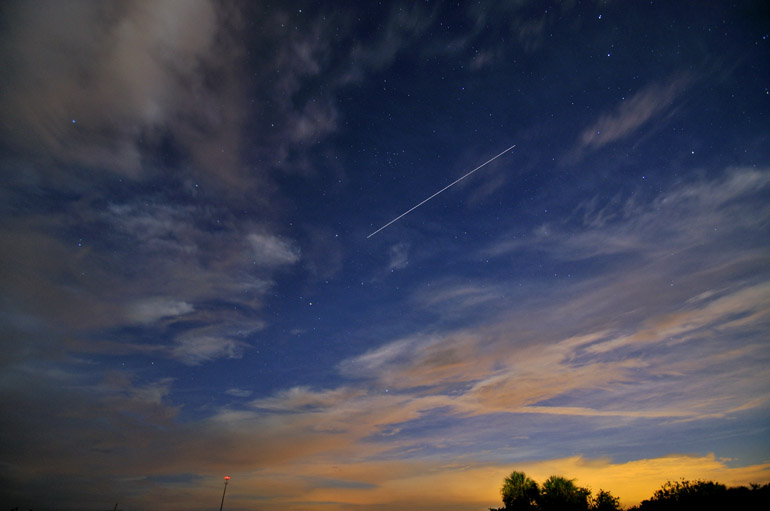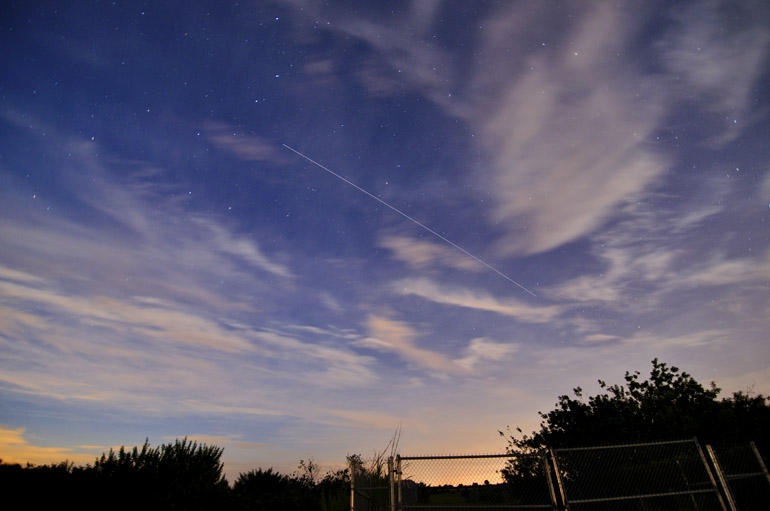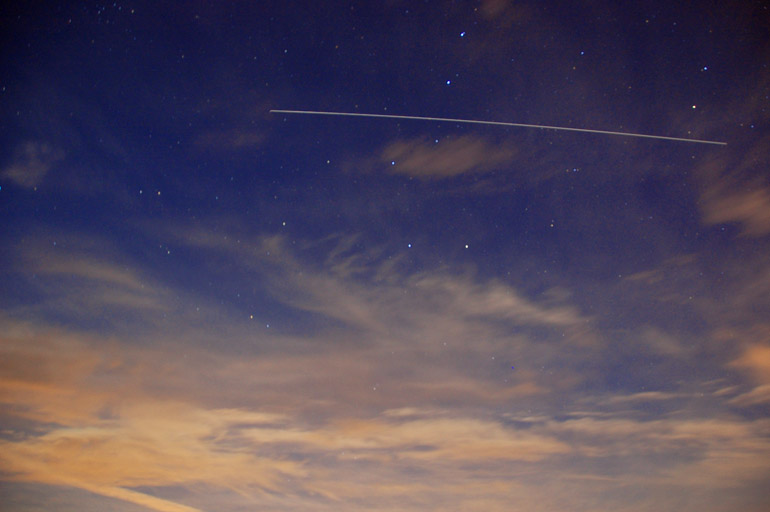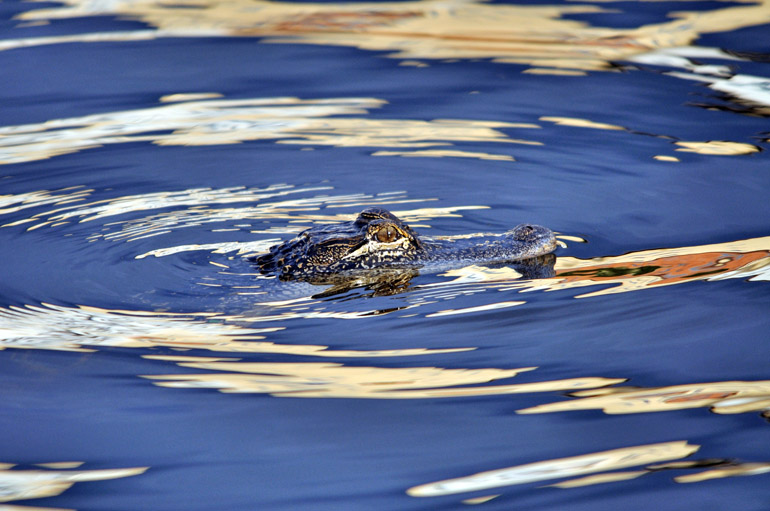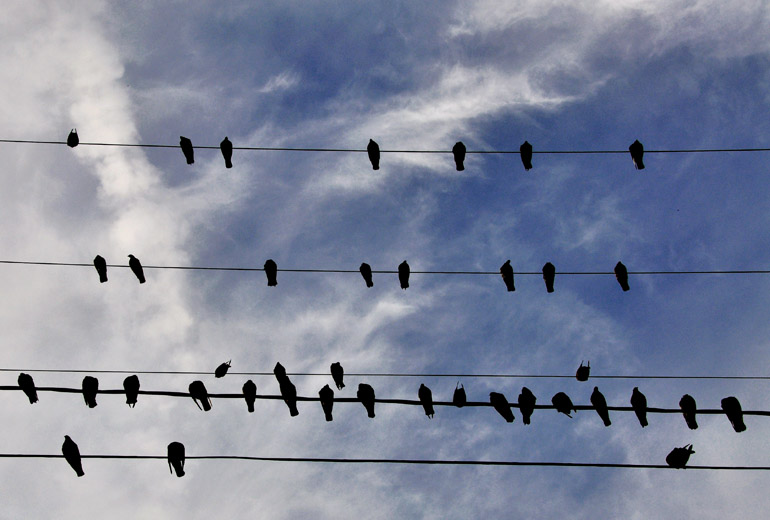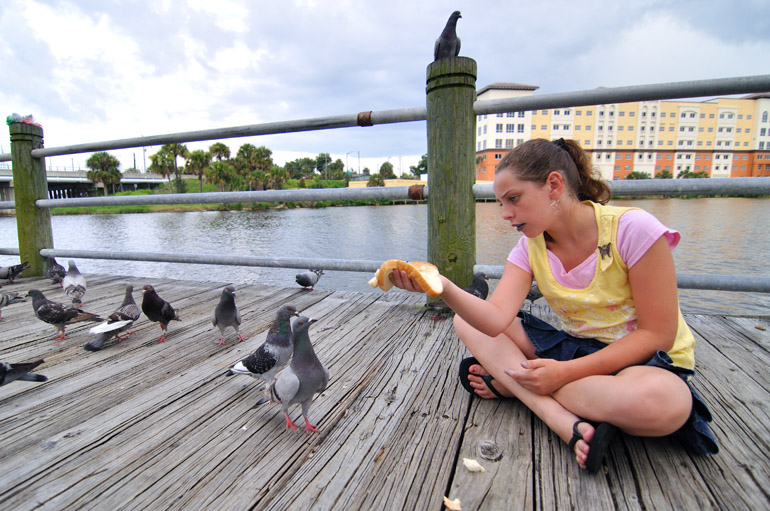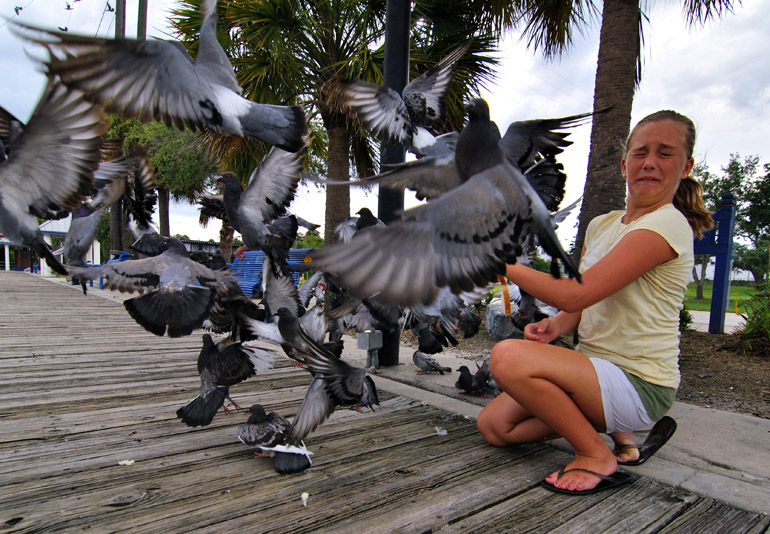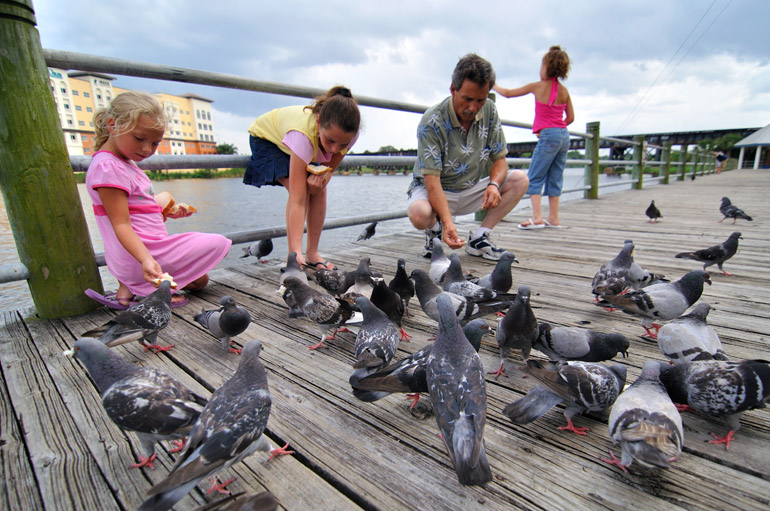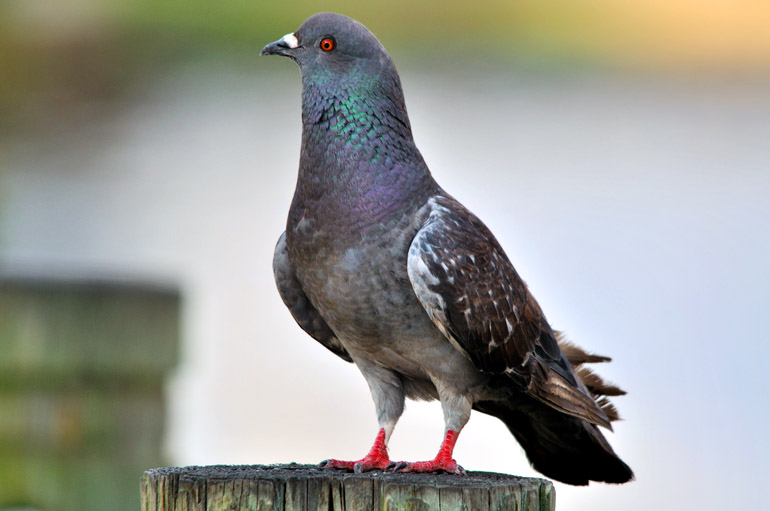This was one of many strikes near my workplace of FLORIDA TODAY. The rain, though, was a pain, severely hindering my photographic attempts.
A firefighter strings caution tape around the backside of a house in Suntree, just north of Melbourne, that was destroyed Friday night after being hit by lightning. The family inside and all of their pets made it out unharmed.
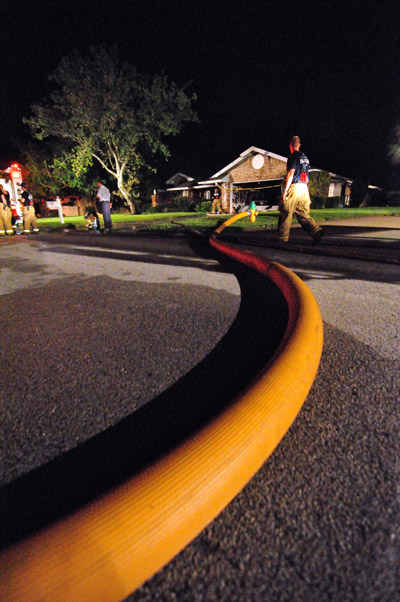 (Left: A hose curls on the pavement in front of the burned-out home.)
(Left: A hose curls on the pavement in front of the burned-out home.)Friday's violent weather brought a destructive close to an otherwise placid, drier-than-normal workweek in Central Florida. The only violence before Friday was precipitated by human beings. People's and Mother Nature's combined forces yesterday, though, meant for an ugly day.
My own workday started perfectly: An incredible photo opportunity presented itself. The details will be shared once they become available and once the opportunity itself solidifies. As budding photographers such as myself know, however, nothing is guaranteed.
Dinner at work was pad Thai, a favorite meal I haven't enjoy in years. I guess my deficient knowledge of Florida's Asian-food scene has shied me away from noodles and peanut sauce, and pushed me toward burgers and fries. The shrimp-and-egg mixture was a tasty relief from the norm.
Work itself was going well. I got ahead of schedule, all while eying the Doppler radar that showed a nasty storm north of the Space Coast in Volusia County. There, residents started snapping photos of the clouds, which formed a waterspout. Television news outlets later reported that a tornado had touched down, damaging more than 150 homes in the Port Orange area. If it weren't for work, I would have been there taking my own photos.
Before long, the skies over Brevard brewed their own rip-roaring boomer. The lightning started flashing in the distance, and I kept tabs on the system until it got close enough for photography. When it did, the rain had begun, an unwelcome condition for shooting nature's electricity.
My first attempts came under the cover of a gazebo in the backyard of the newspaper's headquarters. It sits over a pond and is one of the highest points around, making it conceivable that lightning would seek it out. But I took my chances.
Later in the evening Friday, as it became apparent that lightning would become a news story for Saturday's edition, the copy desk needed a photo to illustrate that. The photographer on duty was trying desperately to get a shot outside a West Melbourne home where a break-in had led to two people getting shot, one fatally. It was the third such fatal incident this week in Brevard, in addition to a shooting in which two people were hit on a porch. Residents here - north to south - are experiencing a frightening spike in crime. I'll keep my doors locked.
An unsuccessful try near the gazebo.
The published photo - raindrops, lens refraction and all.
Trying to eke out something usable for the local section of the newspaper, I took my camera to the employee steps of the building. There, Frank, a does-it-all tech guy at FLORIDA TODAY, stood outside under an overhang, as rain dripped around its edges. The thunder boomed.
"I love this stuff," Frank said.
Finally, someone echoed my enthusiasm for thunder and lightning.
 (Left: A firefighter sprays water upward through a hole in the roof of the home that was destroyed by lightning Friday. The family inside and all their pets made it out.)
(Left: A firefighter sprays water upward through a hole in the roof of the home that was destroyed by lightning Friday. The family inside and all their pets made it out.)I tried some shots underneath the overhang, but it was useless. I had to get further out into the action. Frank fetched his umbrella and offered to hold it as I operated my camera. "Better one than both of us," I told him, referring to, of course, the potential for a direct strike.
With my Nikon D90 wrapped in plastic that protected most of its controls, I ran to the edge of the patio area and plopped down the tripod. The umbrella wasn't doing much good: The camera lens still got speckled with raindrops, and the umbrella itself was featured in the top corner of each usable photo I managed to get out of this storm. My boss thought one would go nicely in the newspaper, so I adjusted it using the camera's onboard editing program, and that was that.
Meanwhile, the storm still seethed. Its destruction became apparent. I had smelled smoke earlier but was unaware that a house not far from the newspaper was burning after a direct strike from lightning. After work, I sought out the fire scene, only to be told by a sheriff's deputy that I had missed the rescue of a dog that had been trapped inside for the duration of the inferno, a detail that was not included in Saturday's newspaper. The family's cat and the family itself made it all right, too.
"A crazy night," the deputy said in reference to the fire and the earlier deadly shooting. "A crazy week."
And then, when I thought all was said and done, I returned home to four young-looking gentlemen being handcuffed in the driveway of my apartment complex, with four police cruisers nearby.
Nature and man need to just settle down a bit. Take a break. Eh, but then what would I photograph?
This just shows the destruction to the garage of the home. The entire structure was gutted. It's a loss for the family, but they still have their own lives, and their pets.
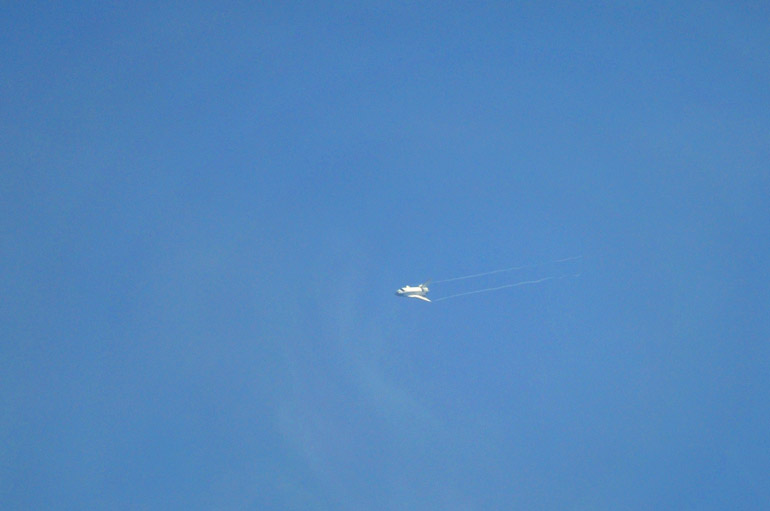
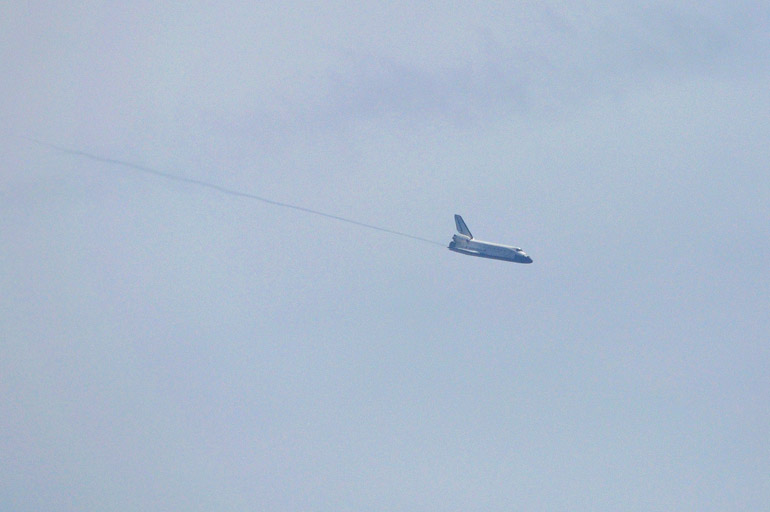
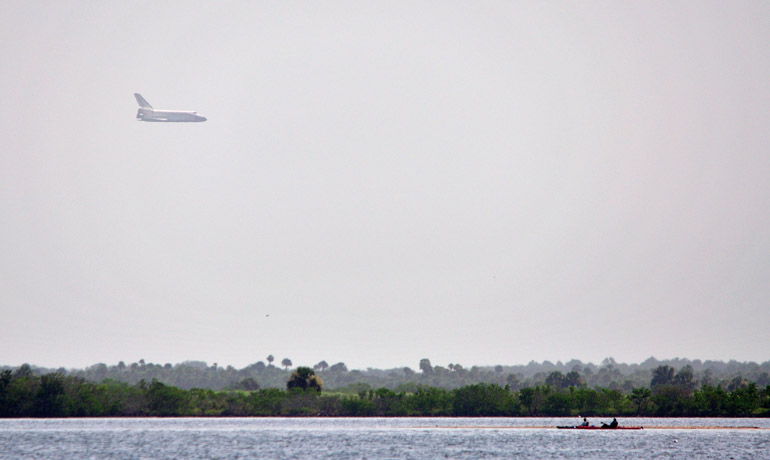
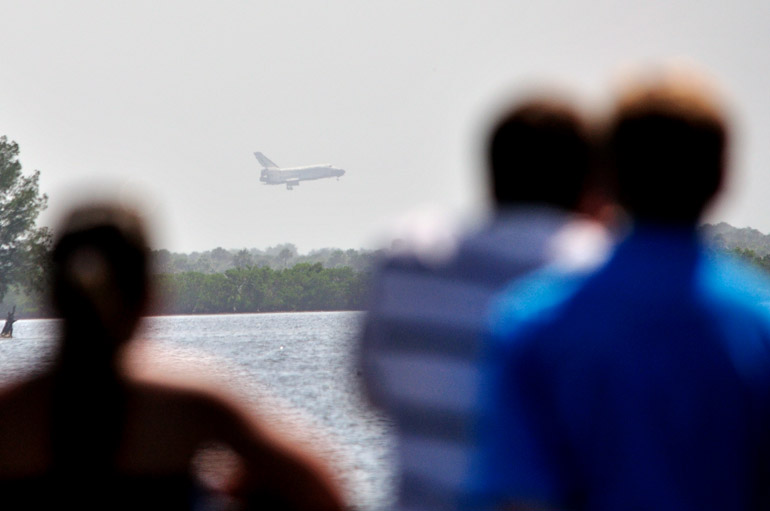


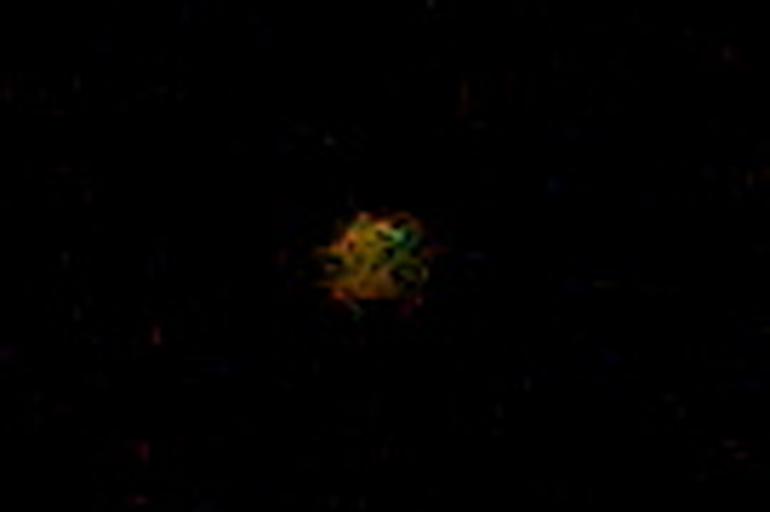
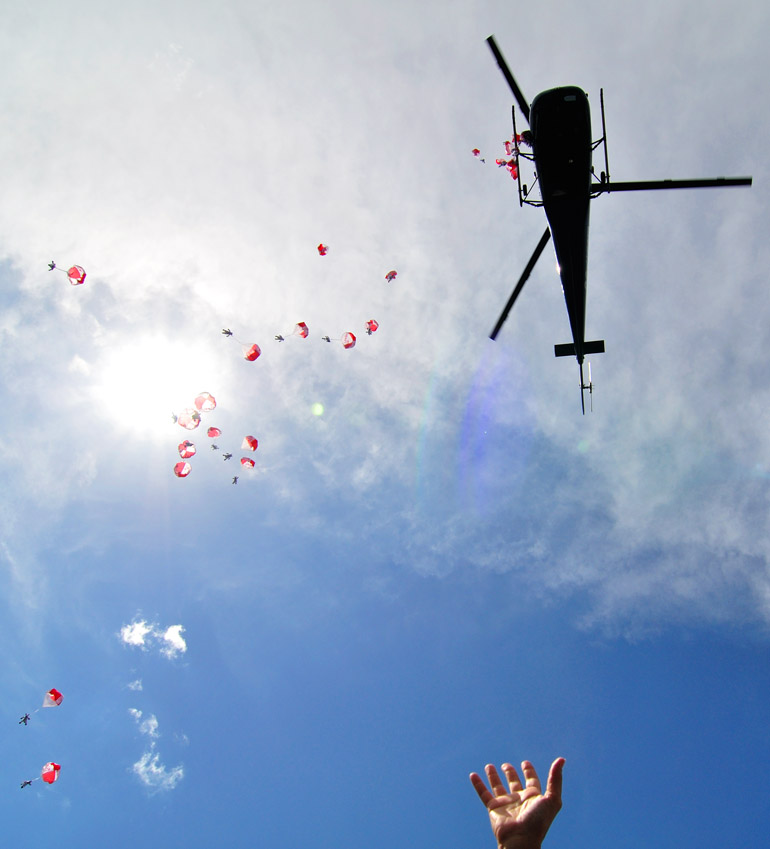
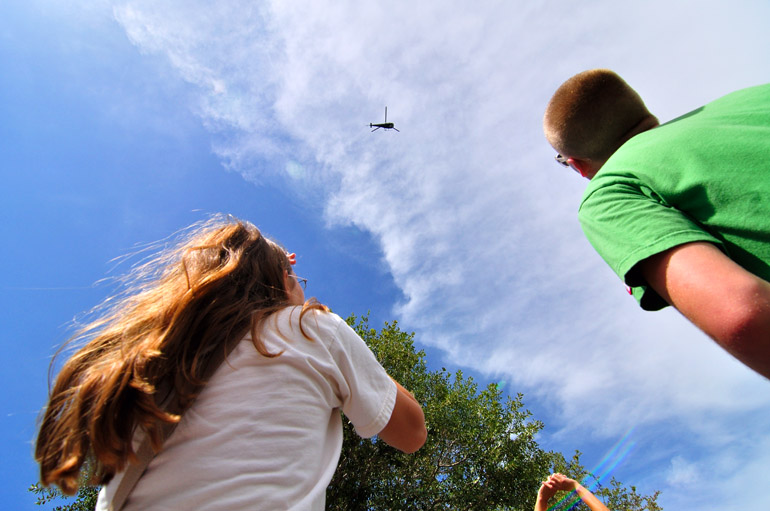
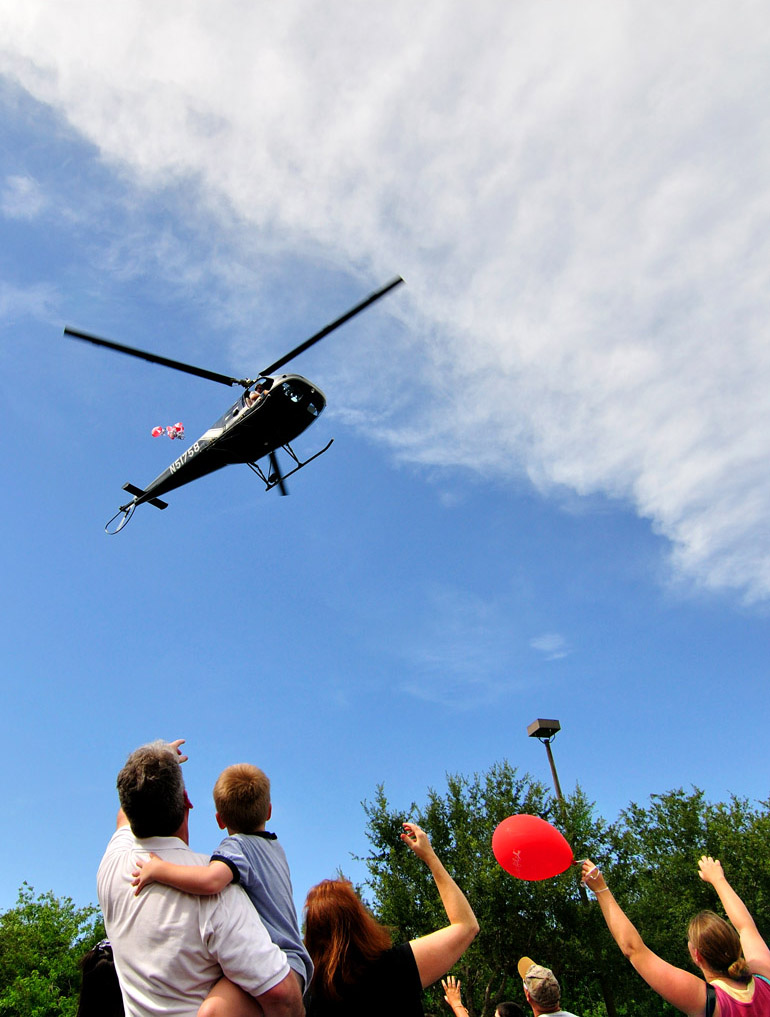




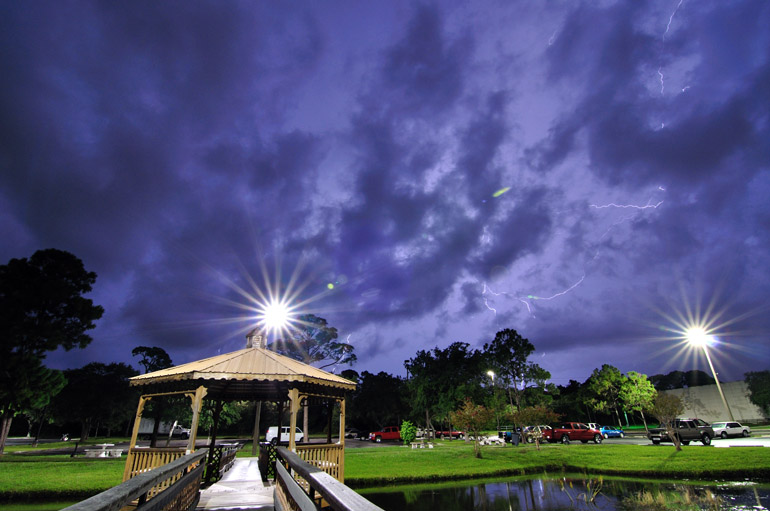
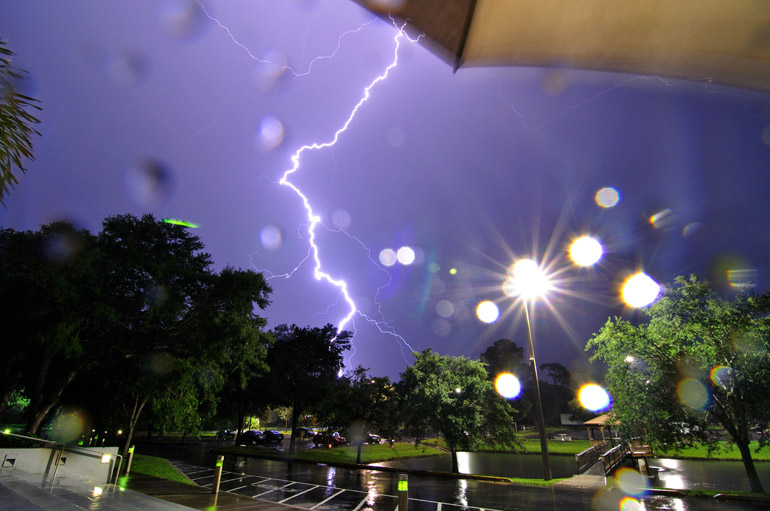

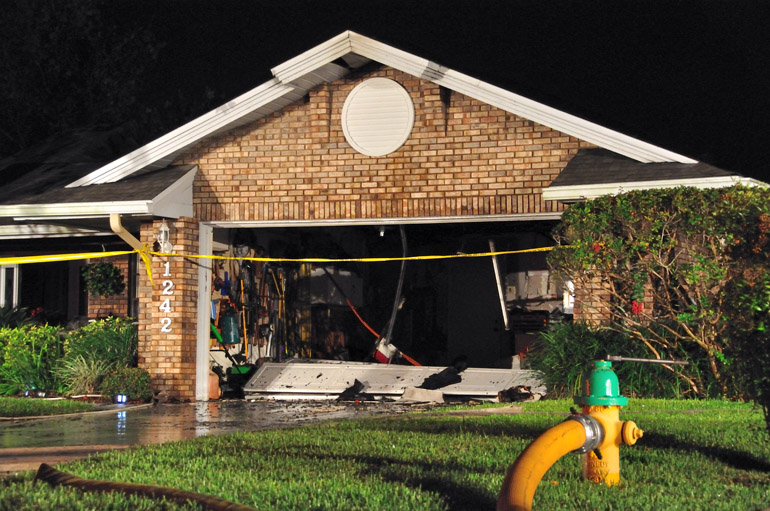
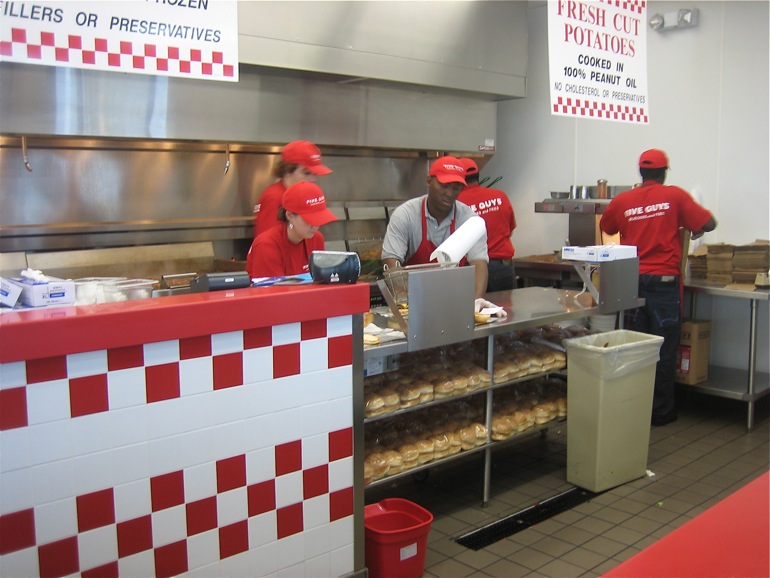

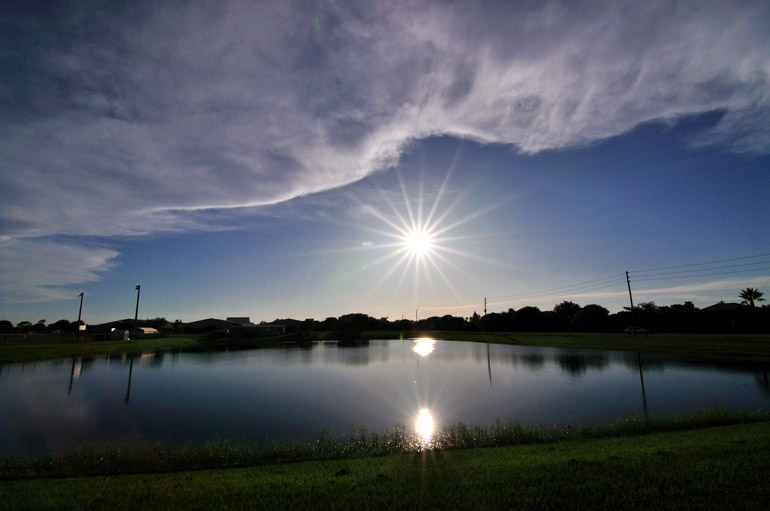

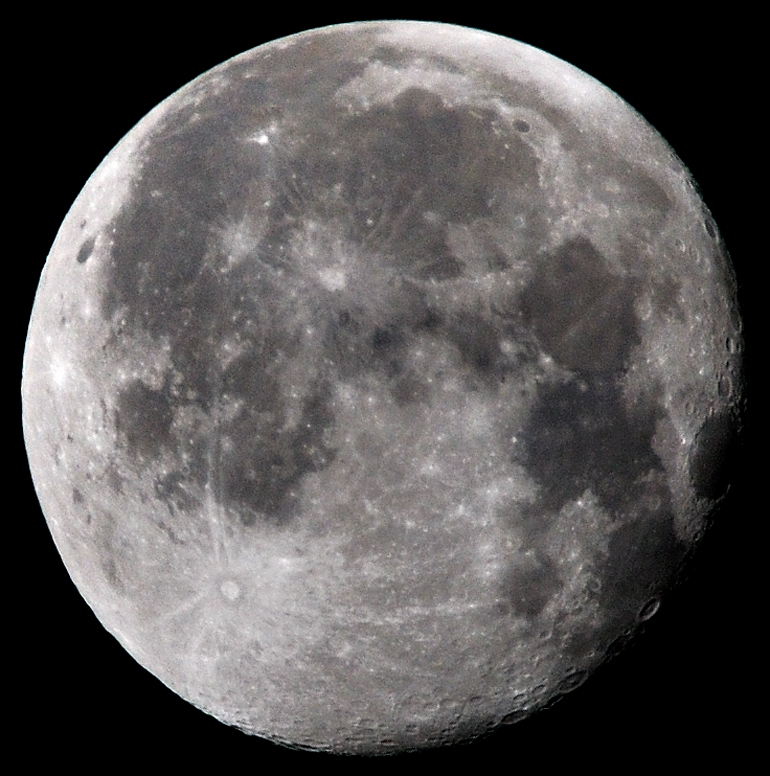
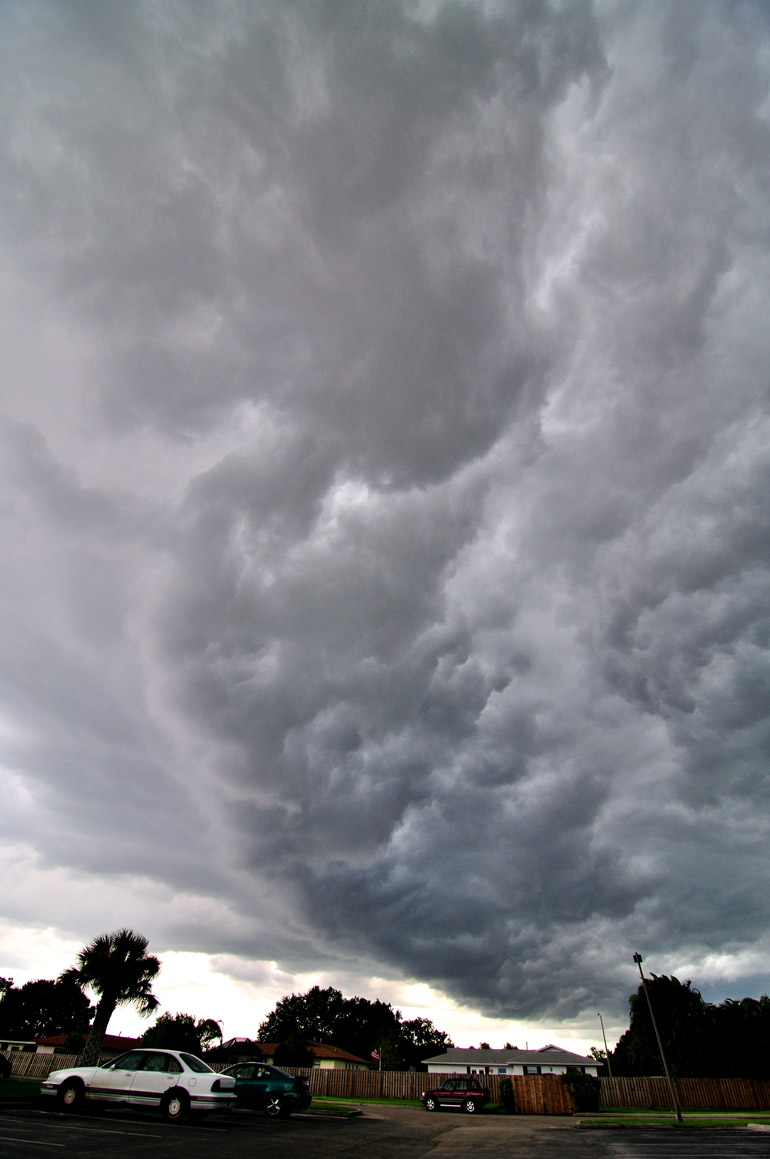
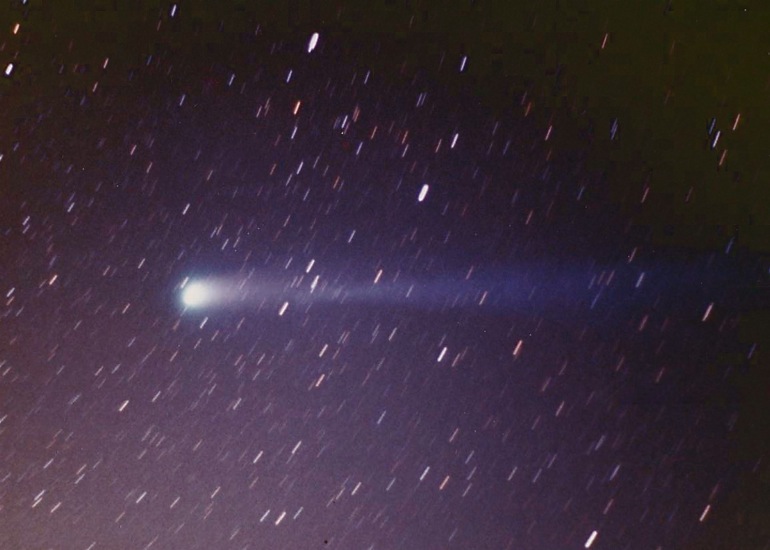
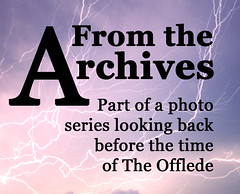 Monday's 40th anniversary of the Apollo 11 moon landing has prompted me to look back into the archives at a later celestial event, a naturally occurring one.
Monday's 40th anniversary of the Apollo 11 moon landing has prompted me to look back into the archives at a later celestial event, a naturally occurring one.

